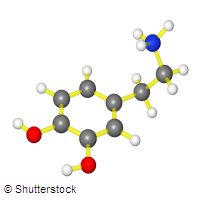Creativity and schizophrenia use similar brain canals
Researchers at the Karolinska Institutet in Sweden have discovered that the brains of healthy, highly creative people are similar to that of schizophrenic patients in some aspects: in both cases, the dopamine system is involved. The results have been published in the Public Library of Science (PLoS) ONE journal. Schizophrenia is a serious mental illness that is characterised by social malfunction and a range of psychotic symptoms such as hallucinations, or inarticulate and disorganised thoughts. According to a 2005 global scientific survey by Sukanta Saha and colleagues, about 4 in 1,000 people are affected by schizophrenia worldwide. This is far below the widespread 1% estimate. Some believe that a number of remarkable artists and scientists owe their strong, unique creative minds to schizophrenia. For instance, some psychologists cite Dutch painter Vincent Van Gogh or US mathematician and economist John Nash as likely schizophrenia sufferers. Therefore, several teams of psychiatrists and neurologists are interested in exploring the link between schizophrenia and high creativity. Using a number of psychological tests, the Swedish team identified a group of 13 healthy, highly creative people. These tests help measure creativity or 'divergent thinking', i.e. a free-flowing generation of ideas. A person is considered creative if she can give novel, meaningful responses to open-ended questions, as opposed to trivial or bizarre answers. The researchers then studied these creative brains, in particular by using imaging techniques such as Positron Emission Tomography (PET) scans, which allow scientists to follow up specific molecules in live patients. In this study, the researchers focused on the dopamine system, which is known to be linked with psychotic symptoms. Dopamine is a neurotransmitter, a chemical naturally produced by the body that passes on messages between neurons. It is involved in many brain functions such as cognition, learning, or reward and punishment. To understand the role of the dopamine system in their experimental group, neurologists measured the density of so-called Dopamine-2 (D2) receptors in zones of the brain that are specifically known to be linked to schizophrenia. The study showed that the more creative the person is, the less D2 receptors can be found in their thalamus (i.e. less dopamine molecules can bind to the neurons in this brain area). 'Schizophrenic patients are also known to have low D2 density in this part of the brain,' explains co-author Dr Fredrik Ullén, a researcher at Karolinska Institutet's Department of Women's and Children's Health. This striking similarity offers a single explanation to how healthy, highly creative people find links between different ideas to solve a problem, and how patients with mental illness make unusual or bizarre associations. The thalamus serves as a kind of brain filter; it sieves out a signal before it reaches the brain cortex, the seat of rational thinking processes. 'Fewer D2 receptors in the thalamus probably means a lower degree of signal filtering, and thus a higher flow of information from the thalamus,' says Dr Ullén. In other words: 'Thinking outside the box might be facilitated by having a somewhat less intact box'.
Countries
Sweden



